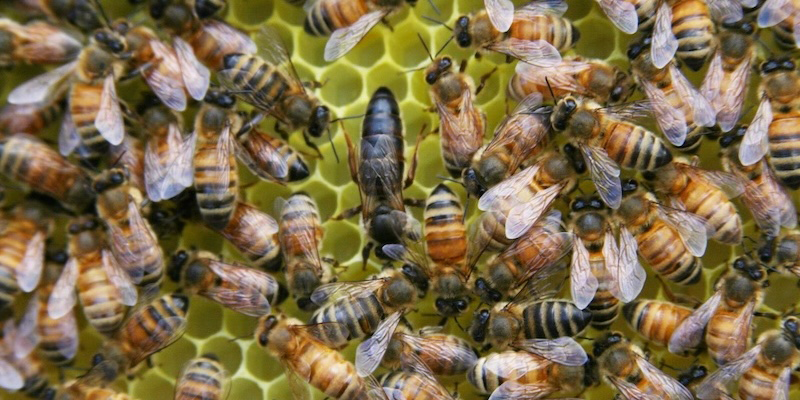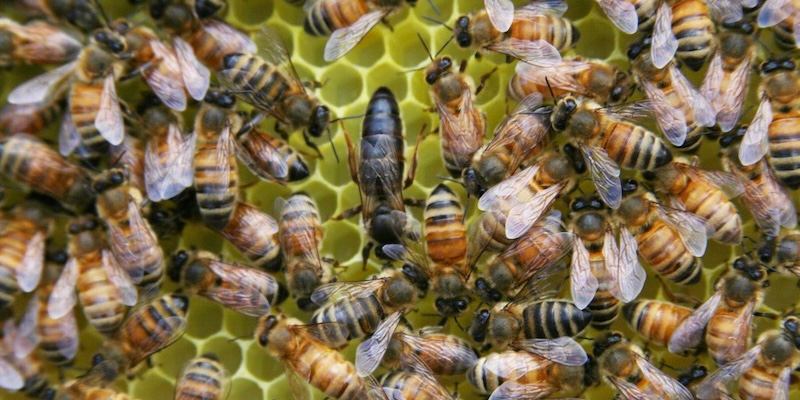Decoding Nature’s Hidden Messages
Living organisms constantly navigate dynamic and noisy environments, where they must efficiently sense, interpret, and respond to a wide range of signals. The ability to accurately process information is vital for both executing interspecies survival strategies and for maintaining stable cellular functions, which operate across multiple temporal and spatial scales [1] (Fig. 1). However, these systems often have access to only limited information. They interact with their surroundings through a subset of observable variables, such as chemical gradients or spatial positions, all while operating within constrained energy budgets. In this context, Giorgio Nicoletti of the Swiss Federal Institute of Technology in Lausanne (EPFL) and Daniel Maria Busiello of the Max Planck Institute for the Physics of Complex Systems in Germany applied information theory and stochastic thermodynamics to provide a unified framework addressing this topic [2]. Their work has unraveled potential fundamental principles behind transduction mechanisms that extract information from a noisy environment.
Bacteria, cells, swarms, and other organisms have been observed acquiring information about the environment at extraordinarily high precision. Bacteria can read surrounding chemical gradients to reach regions of high nutrients consistently [3], and cells form patterns during development repetitively and stably by receiving information on the distribution and concentration of external substances, called morphogens [4]. In doing so, they must interact with a noisy environment where the information available is scrambled and needs to be retrieved without corrupting the relevant signal [5]. All this comes at a cost.
The idea that precision is not free is an old one in the field of stochastic thermodynamics, and the cost usually comes in the form of energy dissipation [6]. This trade-off is even more relevant for biological systems that have limited access to energy sources. Living systems are pushed to find optimal strategies to achieve maximum precision while minimizing energy consumption. Consequently, a complete quantitative description of how these strategies are implemented requires the simultaneous application of information theory and stochastic—that is, noisy—thermodynamics.
In this enterprise, the work by Nicoletti and Busiello constitutes an important step toward quantitative modeling of the underlying principles of information harvesting in biological systems. By employing stochastic thermodynamics, the researchers devised a framework for studying a basic transduction mechanism involving 3 degrees of freedom (DOFs). These are the decoding system or probe, an intermediate transducing level, and the hidden source of information—namely, an active, fluctuating bath. With tools from information theory, the researchers quantified the amount of knowledge the system can obtain from its environment and characterized its transduction properties. Interactions among the DOFs determine how much they influence each other, and as such, the amount of information they can extract from their mutual dynamics.
In this framework, the researchers introduce a functional (a function that has a function as its variable) that plays a crucial role in defining the strategy that the information-harvesting system employs. The functional embodies a weighted trade-off between the information acquired from the environment and the energy dissipated by doing so. However, these quantities are not directly accessible to the probing system. To overcome this limitation, the researchers propose that the real-life strategy optimizes a proxy of this functional that involves DOFs directly interacting with the probe. This proposal allows for the exploration of how biological systems transduce information from accessible DOFs to infer the dynamics of inaccessible ones, even under constraints of finite observation time and energy dissipation. Contrary to the expectation that complete knowledge of all variables always provides a maximum information advantage, the findings of Nicoletti and Busiello suggest that optimal transduction strategies—involving accessible DOFs and obtained by tuning the interaction between observable variables—actually increase the efficiency of information harvesting beyond this ideal scenario. Nevertheless, this enhanced efficiency comes at the cost of increased dissipation, as expected.
To highlight the practical relevance of their framework, the researchers also analyzed recent experimental findings on the dynamics and thermodynamics of red blood cell flickering [7]. Discovered in the 19th century when red blood cells were first observed under a microscope, the flickering of their membranes was originally presumed to be due to fluctuations in thermal equilibrium. Recent research points to a nonequilibrium origin, which is consistent with Nicoletti and Busiello’s proposed modeling approach. In this context, the cytoskeleton acts as an active bath that interacts with the environment through the cell membrane, which in turn serves as the observable DOF. What the researchers found is that as activity increases, the optimization strategy becomes increasingly information driven, revealing that the internal parameters are adjusted such that higher available energy allows the membrane flickering to capture more information from the active cytoskeleton. These results further validated how this approach allows for a precise definition of a system’s strategy for information processing and uncovers possible ways in which organisms can get more from their environment.
Nicoletti and Busiello’s new perspective on how information can be processed in the presence of noise provides researchers with quantitative tools for studying and defining optimal decoding strategies. In the same spirit, it would be interesting to expand this work to encompass more complex biological mechanisms, like feedback loops for state switching and adaptation, characterized by strong nonlinear behavior.
Finally, another fundamental question is how biological systems employ optimal strategies in practice. If maximum information extraction is reached by tracking a limited set of DOFs, the corresponding reduced dynamics observed by the probe must be inferred somehow, for example, via biochemical signaling. Indeed, how this process operates under thermodynamic constraints remains unclear. This question could inspire the study on how optimal coarse-graining procedures might be effectively implemented to boost sensing capacity and information harvesting more generally.
References
- G. Tkačik and W. Bialek, “Information processing in living systems,” Annu. Rev. Condens. Matter Phys. 7, 89 (2016).
- G. Nicoletti and D. M. Busiello, “Tuning transduction from hidden observables to optimize information harvesting,” Phys. Rev. Lett. 133, 158401 (2024).
- G. H. Wadhams and J. P. Armitage, “Making sense of it all: Bacterial chemotaxis,” Nat. Rev. Mol. Cell Biol. 5, 1024 (2004).
- G. Tkačik and T. Gregor, “The many bits of positional information,” Development 148, dev176065 (2021).
- M. Bauer and W. Bialek, “Information bottleneck in molecular sensing,” PRX Life 1, 023005 (2023).
- A. C. Barato and U. Seifert, “Thermodynamic uncertainty relation for biomolecular processes,” Phys. Rev. Lett. 114, 158101 (2015).
- I. Di Terlizzi et al., “Variance sum rule for entropy production,” Science 383, 971 (2024).





